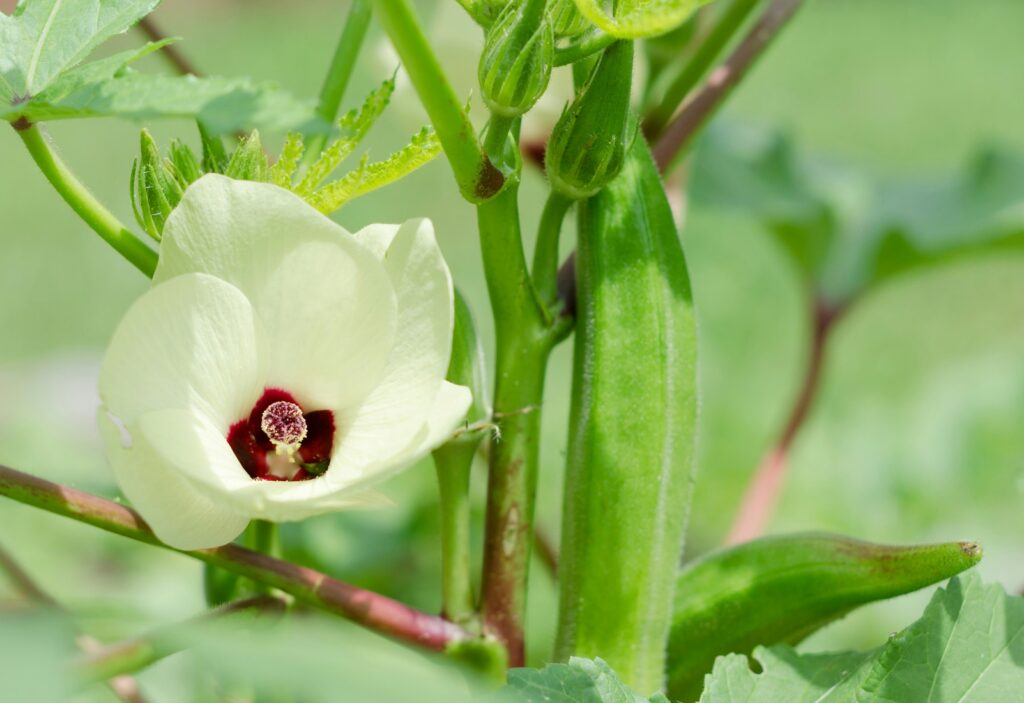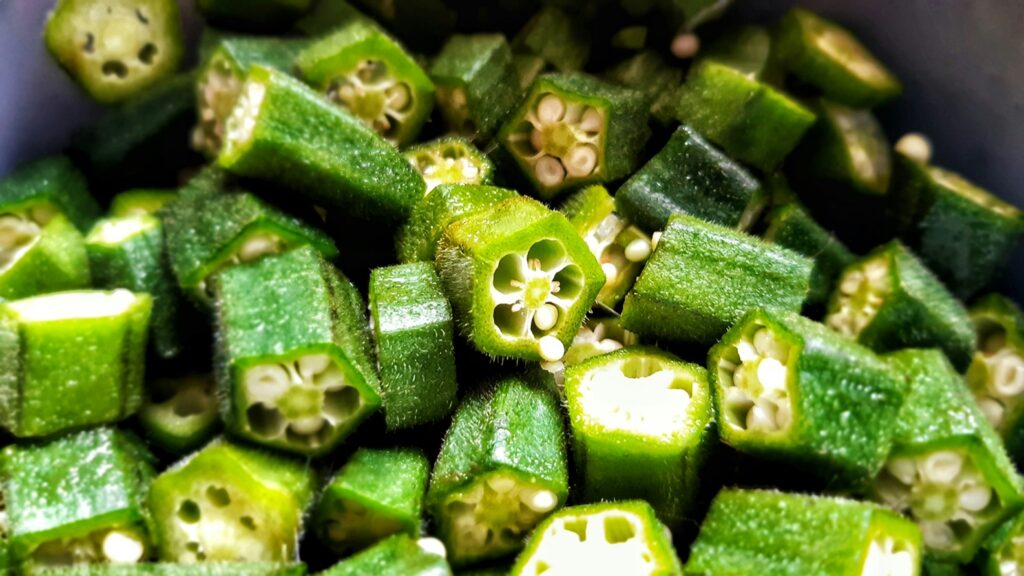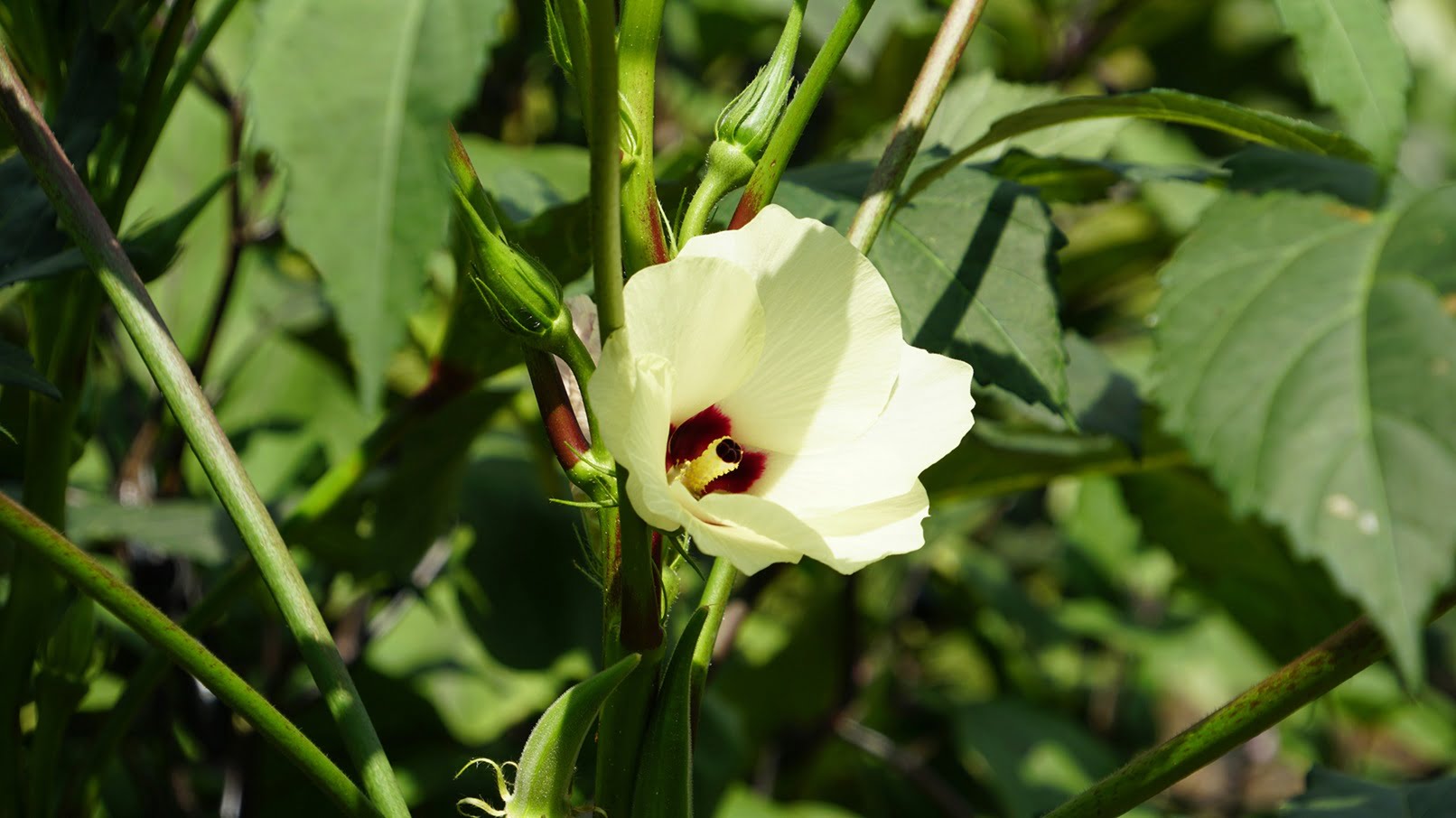Okra plants, also known as “lady’s finger” or “gumbo,” is a warm-season vegetable loved for its unique texture and nutritional benefits.
This versatile plant is not only a staple in many cuisines around the world but also a fantastic addition to home gardens due to its easy cultivation and numerous health benefits.
This blog will take you through everything you need to know about okra: from its benefits and planting tips to comprehensive how-tos for growing and harvesting.
Introduction to Okra Plants
Okra (Abelmoschus esculentus) is a flowering plant belonging to the mallow family. Originating from Africa, it is now widely grown in tropical, subtropical, and warm temperate regions around the world.

The plant produces green seed pods, which are harvested while still tender.
Nutritional Benefits of Okra
Okra is a nutritional powerhouse packed with vitamins, minerals, and fiber. Here’s a breakdown of its nutritional content per 100 grams:
- Calories: 33
- Protein: 2g
- Fat: 0.2g
- Carbohydrates: 7.5g
- Fiber: 3.2g
- Vitamin C: 38% of the Daily Value (DV)
- Vitamin K: 44% of the DV
- Folate: 22% of the DV
- Magnesium: 14% of the DV
Health Benefits of Okra
Digestive Health
Okra is rich in dietary fiber, which aids digestion by promoting regular bowel movements and preventing constipation. The mucilaginous content of okra can also help soothe the digestive tract.
Heart Health
The fiber in okra helps manage cholesterol levels, reducing the risk of heart disease. Additionally, it contains antioxidants that combat inflammation and oxidative stress, further supporting cardiovascular health.
Blood Sugar Control
Okra may help regulate blood sugar levels due to its high fiber content, which slows down sugar absorption in the intestines. This makes it beneficial for individuals with diabetes or those at risk of developing the condition.
Immune Support
With its high vitamin C content, okra boosts the immune system by enhancing the body’s natural defense mechanisms against infections.
Bone Health
Okra provides significant amounts of vitamin K, which is crucial for maintaining healthy bones and preventing osteoporosis.
Choosing the Right Okra Variety
There are numerous varieties of okra, each with its unique characteristics. Some popular varieties include:
- Clemson Spineless: A widely grown variety known for its spineless pods and vigorous growth.
- Annie Oakley: A compact variety suitable for smaller gardens, producing tender pods.
- Burgundy: Known for its striking red pods, which add a pop of color to your garden and plate.
Choose a variety based on your climate, garden space, and personal preference.
Preparing for Planting
Soil Requirements
Okra thrives in well-drained, fertile soil with a pH between 6.0 and 6.8. Conduct a soil test to determine its composition and amend it with compost or organic matter to improve fertility and drainage.
Climate Considerations
Okra requires warm temperatures to grow. It performs best in temperatures between 75°F and 90°F (24°C to 32°C). It is sensitive to frost, so ensure all danger of frost has passed before planting.
Site Selection
Choose a sunny location for your okra plants, as they need at least 6 to 8 hours of direct sunlight daily.
Planting Okra
Starting Seeds Indoors
Start seeds indoors 4 to 6 weeks before the last frost date. Soak the seeds in water overnight to soften their hard coat, then plant them ½ inch deep in seed trays or pots filled with seed-starting mix. Keep the soil moist and warm, around 70°F to 75°F (21°C to 24°C), until germination, which typically occurs within 7 to 14 days.
Transplanting Seedlings
Once the seedlings have at least two true leaves and the outdoor temperatures are consistently warm, they can be transplanted. Space the seedlings 12 to 18 inches apart in rows that are 3 to 4 feet apart to allow for adequate air circulation and growth.
Direct Sowing Outdoors
In warmer climates, okra seeds can be sown directly in the garden. Plant the seeds 1 inch deep and 12 inches apart in rows spaced 3 to 4 feet apart. Thin the seedlings to the strongest plants once they are a few inches tall.
Caring for Your Okra Plants
Watering
Okra requires consistent moisture, especially during flowering and pod development. Water deeply and regularly, aiming for about 1 inch of water per week. Avoid overhead watering to minimize the risk of fungal diseases.
Fertilizing
Okra benefits from a balanced fertilizer applied at planting and again during the growing season. Use a 10-10-10 (NPK) fertilizer, following the package instructions for application rates.
Mulching
Apply a layer of organic mulch around the base of the plants to retain soil moisture, suppress weeds, and regulate soil temperature.
Pruning
Pruning is generally not necessary for okra, but removing lower leaves that turn yellow can improve air circulation and reduce disease risk.
Harvesting Okra
When to Harvest
Harvest okra pods when they are 2 to 4 inches long and still tender. Larger pods tend to be tough and fibrous. Check your plants every other day during the peak harvest period.
How to Harvest
Use a sharp knife or garden shears to cut the pods from the plant, being careful not to damage the stem. Wear gloves and long sleeves if you have sensitive skin, as the plant’s spines can cause irritation.
Post-Harvest Handling
Store harvested okra in the refrigerator and use it within a few days for the best quality. Okra can also be frozen, pickled, or dried for longer-term storage.
Common Pests and Diseases
Pests
- Aphids: Small, sap-sucking insects that can cause distorted growth and transmit diseases. Control them with insecticidal soap or neem oil.
- Flea Beetles: Tiny, jumping beetles that chew small holes in leaves. Use row covers or apply diatomaceous earth to deter them.
- Stink Bugs: These pests suck sap from pods, causing deformities. Hand-pick them or use insecticidal soap.
Diseases
- Powdery Mildew: A fungal disease that causes a white, powdery coating on leaves. Improve air circulation and apply fungicides if needed.
- Fusarium Wilt: A soil-borne fungal disease that causes wilting and yellowing. Rotate crops and plant resistant varieties to manage it.
- Root-Knot Nematodes: Microscopic worms that cause root galls and stunted growth. Solarize the soil and use resistant varieties.
Cooking with Okra
Okra is a versatile vegetable that can be prepared in various ways:

- Fried Okra: Coat sliced okra in cornmeal batter and fry until golden brown for a crunchy snack.
- Gumbo: A classic Southern dish where okra is used as a thickening agent in a flavorful stew.
- Pickled Okra: Preserve okra in a vinegar brine with spices for a tangy treat.
- Stir-Fry: Quickly sauté okra with other vegetables and spices for a simple side dish.
- Grilled Okra: Thread okra pods onto skewers, brush with olive oil, and grill until tender and charred.
Conclusion
Growing okra in your garden can be a rewarding experience, providing you with fresh, nutritious pods throughout the growing season.
With its numerous health benefits, culinary versatility, and relatively easy cultivation, okra is an excellent addition to any home garden.
By following the tips and guidelines outlined in this blog, you can successfully plant, care for, and harvest okra, ensuring a bountiful supply of this delightful vegetable. Happy gardening!
Also Read: What Is A Calathea Plant: Types, History, And Care Guide
Well, what do you think about the article?
Did you enjoy reading “The Ultimate Guide to Growing Okra Plants“?
We really hope that you have enjoyed this article. If you have any thoughts or comments about this post, please feel free to share them in the comment section below. We appreciate your feedback and would be glad to hear from you.
To see more content like this check the gardening section of Money For My Beer.

Chief Editor and Website Owner.
Hey, I’m Ryan, a software guy and the owner of Money For My Beer. I’m the one making sure all our posts on the site are awesome.
I usually handle tech stuff that might not be super interesting to everyone, like programming enterprise software, apps, games, and websites. Cool stuff, right? I also help clients with SEO and sometimes create games.

